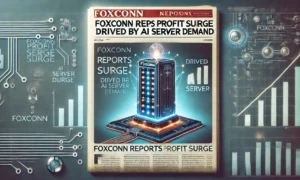Introduction
In December 2024, a significant milestone was achieved in the advancement of electric vehicle (EV) infrastructure in the United States. Stellantis, a multinational automaker, and Samsung SDI, a leader in battery manufacturing, secured a conditional commitment of up to $7.54 billion in loans from the U.S. Department of Energy (DOE). This joint venture aims to build two state-of-the-art EV battery manufacturing facilities in Indiana, marking a pivotal moment in the U.S.’s journey toward clean energy and sustainable transportation.
This case study explores the background of this venture, the financial and operational details, the implications for the automotive and energy sectors, and the broader economic and environmental impacts anticipated from this initiative.
Background of the Joint Venture
Stellantis, formed through the merger of Fiat Chrysler Automobiles (FCA) and PSA Group, has aggressively pursued electrification goals under its strategic plan. Samsung SDI, renowned for its expertise in lithium-ion and next-generation battery technologies, has become a key partner in this mission. The collaboration aligns with Stellantis’s Dare Forward 2030 strategy, which commits to achieving 50% EV sales in the U.S. by 2030 and reducing carbon emissions by 50% by the same year.
This partnership with Samsung SDI underscores the urgency to localize EV battery production in the U.S., particularly as the Inflation Reduction Act (IRA) incentivizes domestic manufacturing through tax credits and subsidies.
Loan Details and DOE’s Role
The U.S. Department of Energy’s Loan Programs Office (LPO) has extended the $7.54 billion loan under the Advanced Technology Vehicles Manufacturing (ATVM) program. The conditional loan aligns with the Biden administration’s focus on enhancing domestic manufacturing capacity, creating jobs, and combating climate change.
Key Financial Details:
- Loan Amount: Up to $7.54 billion.
- Purpose: Construction of two EV battery plants in Indiana.
- Funding Source: Advanced Technology Vehicles Manufacturing (ATVM) Loan Program.
- Loan Conditions: The final disbursement depends on meeting specific performance and environmental standards.
This marks one of the largest commitments under the ATVM program, which has previously supported industry giants like Tesla, Ford, and General Motors.
Project Details
Manufacturing Facilities
- Location: Kokomo and Tipton, Indiana.
- Capacity: The combined annual production capacity is expected to exceed 80 GWh of EV batteries, enough to power over 2 million vehicles annually.
- Timeline: Construction will begin in early 2025, with operations projected to commence by late 2027.
- Technology: Both facilities will employ advanced lithium-ion battery technology, including nickel-rich cathodes and solid-state innovations, to maximize energy density and longevity.
Economic and Job Creation Impact
- Direct Jobs: Over 1,400 permanent positions in manufacturing and operations.
- Indirect Jobs: Thousands more in construction, supply chain, and related industries.
- Regional Investment: The project is expected to inject billions into Indiana’s economy, fostering local businesses and infrastructure development.
Strategic Implications for Stellantis and Samsung SDI
For Stellantis
- Supply Chain Security: Establishing domestic battery production reduces reliance on imports, safeguarding against geopolitical risks and supply chain disruptions.
- Cost Efficiency: Local production benefits from federal tax incentives and reduced transportation costs, improving overall profitability.
- Brand Positioning: Demonstrates Stellantis’s commitment to sustainability and positions the company as a leader in EV transition efforts.
For Samsung SDI
- Market Expansion: Strengthens Samsung’s foothold in the North American market, which is rapidly transitioning to electrification.
- Technological Leadership: Showcases Samsung SDI’s cutting-edge battery technologies and commitment to collaboration with global automotive leaders.
Broader Industry and Environmental Impacts
Automotive Industry
- Increased Competition: The project sets a benchmark for other automakers and battery manufacturers, spurring innovation and cost reduction.
- Enhanced EV Adoption: The increased availability of batteries is expected to accelerate the production of affordable EVs, making them accessible to a broader audience.
Environmental Benefits
- Carbon Reduction: The facilities are projected to reduce lifecycle emissions by 50% compared to imported batteries through localized production and renewable energy integration.
- Energy Efficiency: Advanced manufacturing processes will minimize waste and improve resource utilization, aligning with circular economy principles.
Challenges and Risks
- Regulatory Compliance:
- Meeting stringent environmental and safety regulations could delay construction or increase costs.
- Market Dynamics:
- Fluctuations in raw material prices, particularly for lithium, cobalt, and nickel, may impact profitability.
- Technological Uncertainty:
- While solid-state and nickel-rich cathode technologies hold promise, scaling them for mass production poses technical and financial challenges.
Conclusion
The $7.54 billion loan secured by Stellantis and Samsung SDI for their EV battery plants is a monumental step in the U.S.’s electrification journey. This venture not only enhances the competitiveness of American manufacturing but also aligns with global sustainability goals. By addressing key challenges and leveraging state-of-the-art technologies, this partnership is set to drive significant economic, environmental, and technological benefits over the next decade.
With its ambitious scope and transformative potential, this initiative serves as a blueprint for future collaborations between automakers, energy companies, and governments worldwide. The Stellantis-Samsung SDI partnership illustrates how public-private ventures can catalyze progress in building a sustainable and resilient future.


